Osteochondrosis is a disease that affects the spine through the development of alterations in the intervertebral discs of one section or another. Its danger lies in the fact that the development of the disease occurs imperceptibly. Currently, this disease has become much younger.
What is Spinal Osteochondrosis
Doctors define this disease as a chronic degenerative-dystrophic change in the spine, its structure. About 80 percent of the world's population suffers from the disease, and the first signs of the disease are seen as early as 20-25 years old. Later, it can bring more serious health problems.
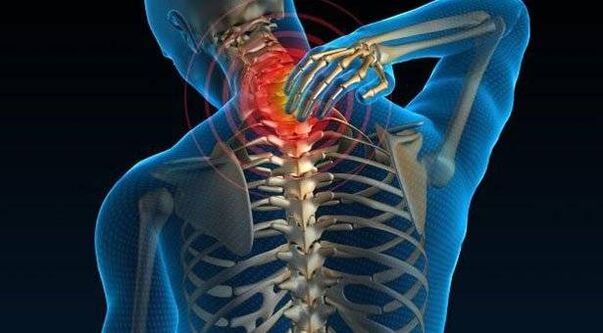
Most often, osteochondrosis of the lumbar spine occurs, more rarely, cervical and thoracic chondrosis is seen. A person has 33-34 vertebrae, which are connected by intervertebral discs. They perform a number of important functions, thus ensuring spinal mobility.
Osteochondrosis of the spine is characterized by shrinking and changing the size of these discs and the space between them, which leads to a decrease in their strength and elasticity. A high load on the spine leads to dislocation of the discs, the result is pain during movement, subsequently an intervertebral hernia develops.
Displacement of the vertebrae causes compression of nerve endings, compression of blood vessels. Spinal curvature, damage to individual parts, its deformation is an irreversible process. Ligament ossification further reduces spinal mobility.
what types are there
Depending on the damaged areas, the following types of osteochondrosis are distinguished:
- Cervical spine, most often seen in young people who lead a sedentary lifestyle and work at a computer for a long time;
- The thoracic spine, a rare type of disease, can be triggered by changes in the thoracic spine due to various factors (eg, trauma);
- In the lumbosacral region, the disease is more common, it affects more people over 30 years of age;
- Common chondrosis, when several parts of the spine are affected at the same time.
The disease goes through several stages:
- The first stage is often overlooked. Instability of the vertebrae appears, caused by its dislocation, there is a slight discomfort when moving. This is a dangerous stage in which injuries are most likely.
- In the second stage, the fibrous ring of the vertebral disc is destroyed, which leads to a reduction in the distance between them.
- The third step is accompanied by the rupture of the fibrous rings, the disc core moving out of place. At this stage, intervertebral hernias appear, which lead to spinal deformation.
- The last stage is characterized by severe pain syndromes. Bone growths and ligament ossification impede the spinal freedom of movement.
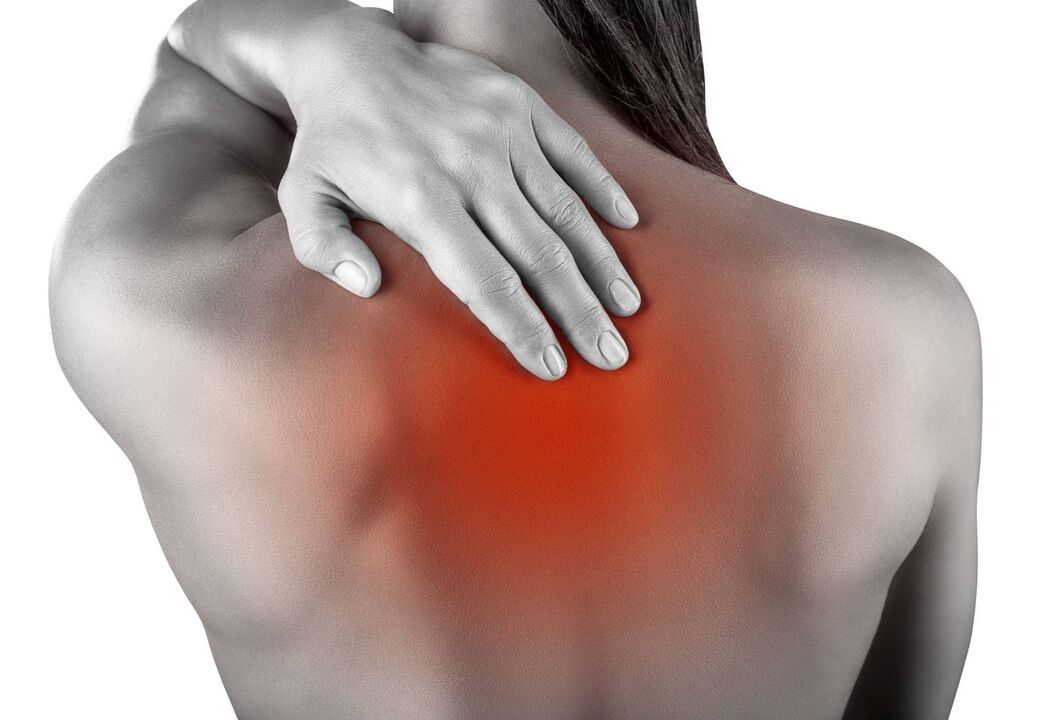
Osteochondrosis is caused by muscle pinching, which leads to muscle spasms. This leads to limited mobility in the joints and spine. The result is dystrophy of the vertebrae and discs, narrowing of the holes between the vertebrae, compression of the nerve roots.
Symptoms
Symptoms of this disease depend on the affected area. It is important to note that, individually, people attribute most of the symptoms of this illness to other problems. For example, tension and stress are thought to cause headaches, while hearing loss is caused by wearing headphones.
The symptoms of cervical osteochondrosis manifest as follows:
- Headache that gets worse when you try to move your head;
- Pain in the neck, moving to the area of the scapula, arms and chest;
- Sensitivity is often disturbed, fingers are numb, weakness is felt;
- Tongue movement is limited, which affects speech, snoring may appear;
- The voice changes, becomes weak and hoarse;
- Dizziness, loss of consciousness are possible;
- Impaired movement coordination, loss of orientation when walking;
- The condition of the teeth is deteriorating;
- Hearing diminishes, ringing in the ears appears.
Rarely, but there is osteochondrosis of the chest. It is usually caused by injuries to the spine. Scoliosis could be the cause. Symptoms of this disease:
- Sharp pains in the chest region, worse when trying to breathe deeply and when moving;
- Pain in the stomach, liver and heart areas is possible;
- Sometimes there is a feeling of numbness in the chest.
The most common variant of the disease is lumbosacral osteochondrosis. It is manifested by severe pain in the lower back. Symptoms may be different, but in the first period of development they are not very pronounced. But over time or with a "successful" situation, the disease gets worse. Appear:
- Pains or sharp pain in the area just above the coccyx that aggravates with movement;
- Pain radiates to the hip region, the sensation of the legs is disturbed;
- Restriction of body movements, it is impossible to bend over, turn around;
- In the last stage it is often impossible to sit down, it is difficult to get up, muscle weakness develops.
Osteochondrosis Treatment
Many are interested in the question of how to treat osteochondrosis and whether this disease can be completely cured. Doctors unequivocally answer this question no, but it is possible and necessary to start treatment on time and stop the development of the disease. There are many ways to treat osteochondrosis, with the help of both classical and folk medicine.
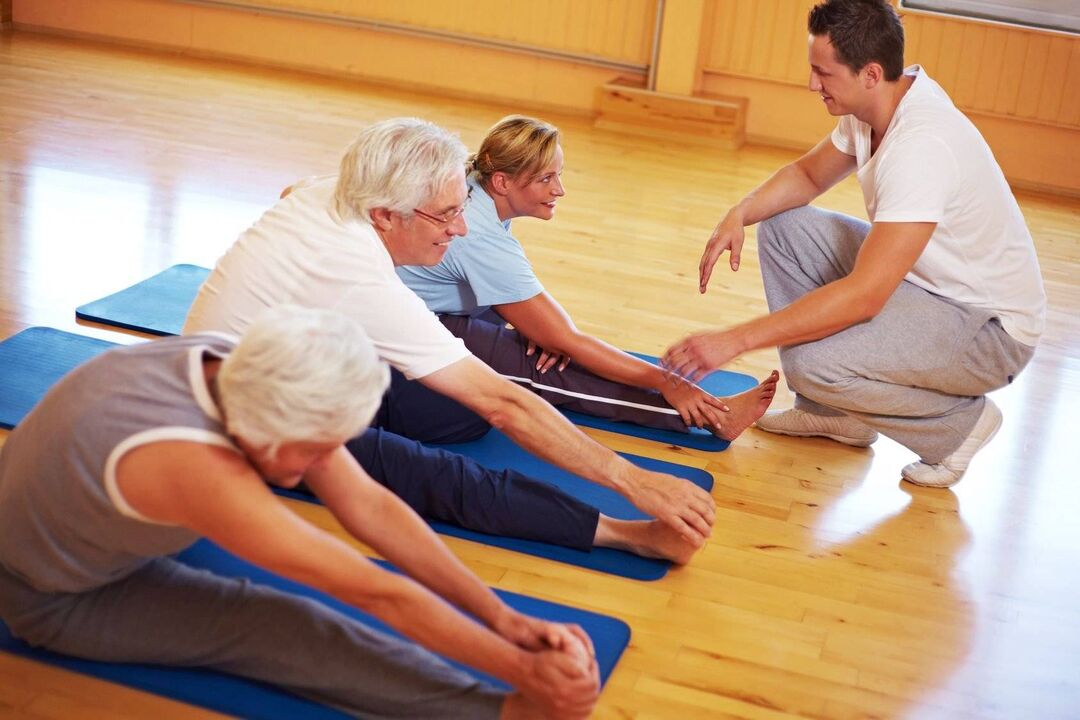
It is important to note that this disease is treated quite effectively, particularly in the early stages of the disease. On an outpatient basis, a comprehensive and special program is used, which aims to quickly eliminate the symptoms of the disease, correcting the causes of suffering.
Complex therapy includes the following techniques:
Acupuncture.
Acupuncture is performed every one to two days. The course of treatment is prescribed by the doctor, it can last from seven days to a month, as a rule, 12 to 15 procedures are enough. The acupuncturist performs a visual and manual examination of the patient. A procedure takes about half an hour. Needles are set for 15-20 minutes.
For the operation, disposable sterile acupuncture needles are used, inserted under the patient's skin, while a light injection is felt, similar to a mosquito bite. When the needle hits a biologically active point, the person experiences numbness, pain, or a swollen feeling there, pain is extremely rare.
Vacuum Therapy.
For the procedure, special vacuum pots are used. The effectiveness of this method is very high, there are practically no painful sensations. This method of treatment allows you to eliminate the symptoms of the disease quickly and safely. It is based on the mobilization of the body's own resources and is used in rehabilitation medicine.
Under the influence of the pots, pressure drops are created, the skin and part of the muscle are pulled into the bottle. Thanks to the deep processing of a large area, blood microcirculation is improved, stagnation is eliminated, harmful substances are removed, tissues are renewed more quickly.
The areas of influence of vacuum therapy are extensive, the doctor himself chooses and prescribes the zones for the procedure. The blemishes that appear in the procedure after the fourth procedure begin to dissolve, so you shouldn't be afraid of them.
Manual therapy.
These are highly effective mild treatments among non-drug options. A chiropractor helps to eliminate many problems associated with muscles and the spine, being used in the treatment of neurological diseases.
The impact outwardly resembles a conventional massage, but with a more limited location and moderate impact strength. A qualified manual physician is able to cure illnesses that cannot be treated with medication.
To treat the spine, this method aims to increase the elasticity of the muscles, improving the movement of each vertebra. Procedures are not performed daily, but at regular intervals of up to seven days. Manual treatment in combination with physical therapy and folk remedies, as well as physical therapy exercises, is most effective.
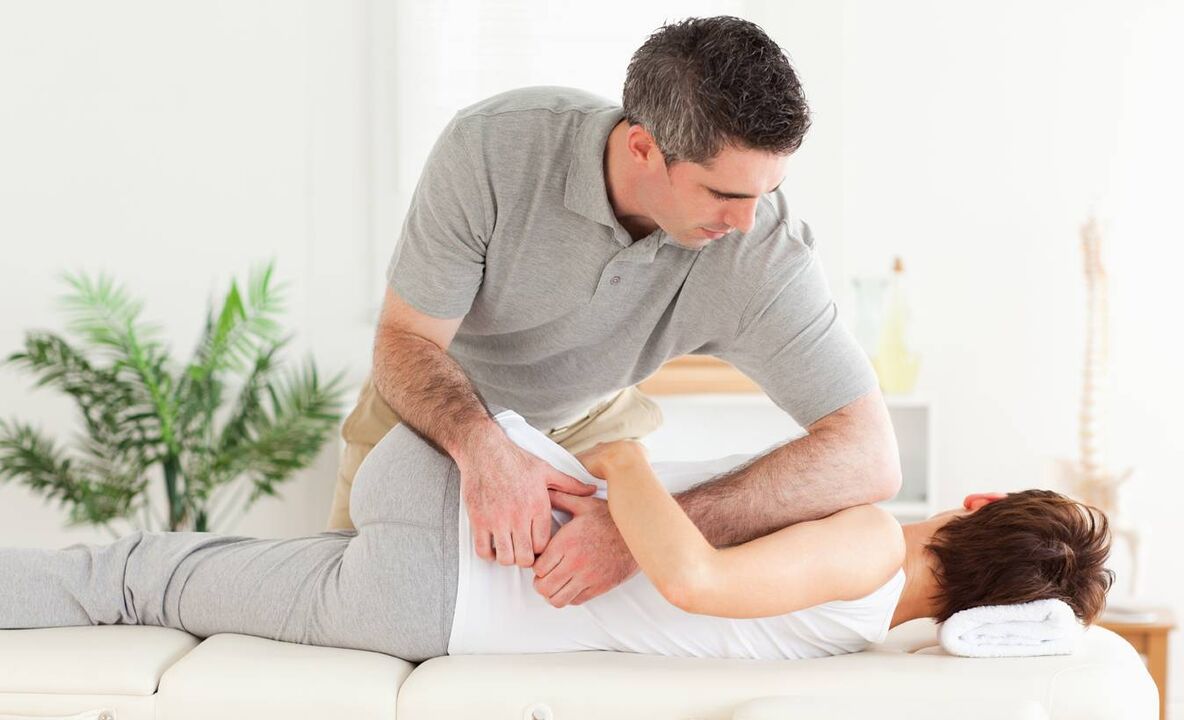
Pharmacopuncture.
This method uses active points in the human body, into which drugs are injected in minimal amounts, indicated for a specific disease. They can be vitamin complexes, homeopathic remedies, biostimulants, corticosteroids. The introduction is made with a microneedle, with practically no discomfort.
For the treatment of the spine, an adapted version is used, which allows to cure osteochondrosis, vertebral hernia and other problems. It is used for rehabilitation after spinal surgery. Pharmacopuncture increases metabolism, improves connective tissue trophism and blood circulation in the affected area. Even a small treatment complex shows a positive and sustainable result.
Magnetopuncture.
This method involves impacting biologically active points with a magnetic field. For this purpose, magnetophores are used, in which certain properties of polarity, size and power are defined. This device consists of rubberized magnets, they generate a constant magnetic field. For the treatment of various diseases, metal plates of different shapes, areas and thicknesses and magnetic balls are used.
Laser therapy.
This is a laser effect on special acupuncture points through intact areas of the skin. Low power red lasers are used in most cases as they show the greatest activity. As a result of the treatment, inflammation and pain, spasms are relieved, blood vessels dilate, metabolic processes are improved, and cell regeneration is increased.
Electrical stimulation.
An electric current is applied to influence certain points. It is effective for electrical stimulation of motor muscles and nerve endings. Single shot single pulses, exponential currents, rhythmic direct current and modulated sinusoidal currents are used. It is possible to eliminate severe pain in just 1-3 procedures. The full course requires 10-15 sessions.
Outpatient therapy usually includes a drug component designed to relieve pain. For this, analgesics, anti-inflammatory, antispasmodics, antioxidants are used, in addition to medications that can correct psychosomatic disorders and reduce cartilage degeneration.
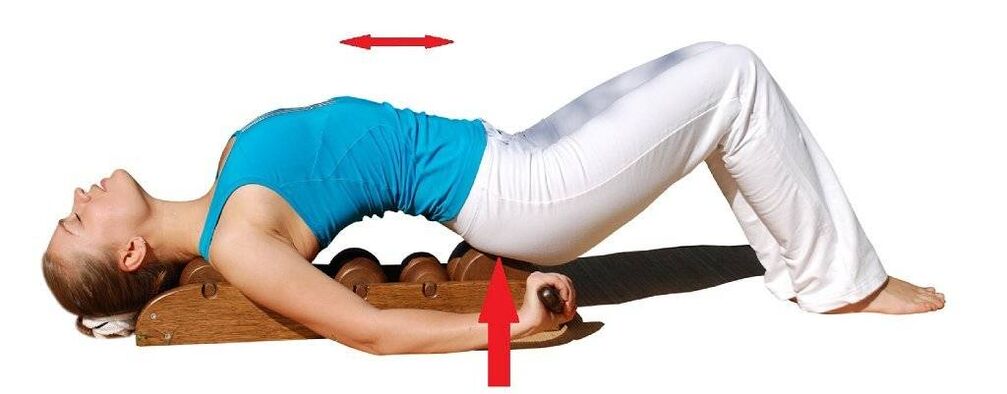
traditional methods
In the traditional medicine piggy bank, there are many ways to alleviate the condition with osteochondrosis.
For external use, the following options are used:
- A small amount of ointment is applied to the affected area, rubbing it gradually into the skin. The treated area must be carefully wrapped to keep it warm. Just perform the procedure 3 to 4 times a day.
- Ointment compresses are good for relieving inflammation and pain. The oiled place is covered with plastic wrap, you can put fresh mint leaves or lemon balm, a burdock leaf or white cabbage work well. Wrap it with a woolen scarf and secure the compress. Freshly beaten birch leaves give a good effect, are applied to the problem area and wrapped for half an hour.
- To scrub, you can use vegetable oil with herbs - oregano, St. John's wort. For half a liter of vegetable oil, about 500 grams of raw material are consumed. Fresh oregano cake is infused for 24 hours and dried St. John's Wort is filled with oil for 21 days.
- You can make a mass of 1/3 cup of black radish juice, 200 g of fresh honey, 100 ml of vodka and a handful of fresh lavender flowers. Insist on a warm spot for 24 hours, after which the makeup can be used for scrubbing.
Don't forget about proper nutrition and an active lifestyle. It is necessary to constantly monitor your posture, while sitting in a chair and at the computer, it is advisable to sleep on a medium hard surface.
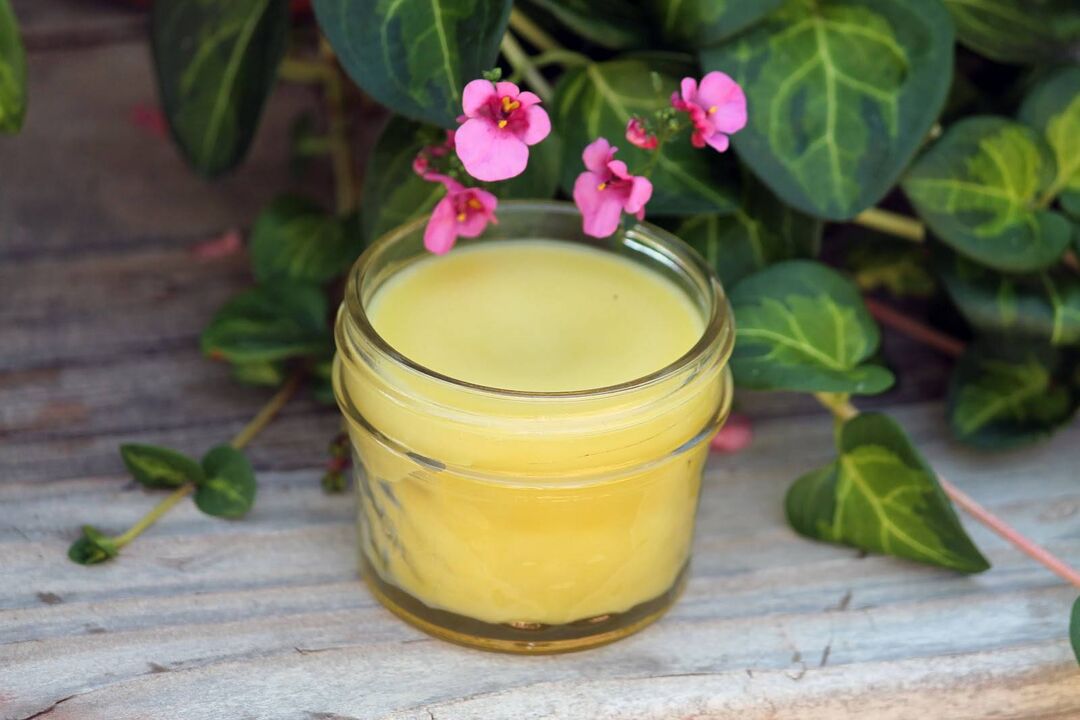
The spine must be constantly supported, so you can use special exercises and avoid long, monotonous posture.
Exercises for osteochondrosis at home
At home, you can do effective and simple gymnastics, which should be included in the complex of measures for the treatment of spinal diseases. It is recommended to perform the following exercises for osteochondrosis.
- Tilt your head forward, grasp the forehead area with your fingers intertwined. Make movements with your head down, holding with your hands. Reverse movement is to try to lift the head on an incline and, with hands, woven into the back of the head, to resist the movement. Each move takes 10 seconds.
- Impact on biologically active points with the help of the palm and fingers: first massage the forehead region, press the skin and move it with gentle movements. Exposure time is 20-40 seconds. Then go to the temporal areas, the impact is done in the same way. The procedure ends with a massage of the atria, the ear is stretched in all directions.
- To improve brain nutrition, you should sit on a flat surface with your back straight. The head is slowly pulled back, you can easily help yourself with your hands, pressing your chin with your palm. Exercise time is 10-30 seconds. You can then turn your head slightly to one side or the other, remaining in this position for 10-15 seconds.
- This is an excellent exercise for preventing cervical osteochondrosis. Helps improve the functioning of the nervous plexus located in the neck. IP - sitting on a flat surface with a straight back. Slowly move your head towards your chest, trying to reach it with your chin. You can help yourself a little with your hands on the back of your head, pushing forward and up. Sit in this position for about a minute, rest for 10-15 minutes and repeat the exercise.
- Warming up affects the upper spine while simultaneously pulling the shoulders up to the ears as high as possible. Then lower them freely and easily. Repeat 15 seconds. Then repeat the exercise, but for each shoulder joint separately.
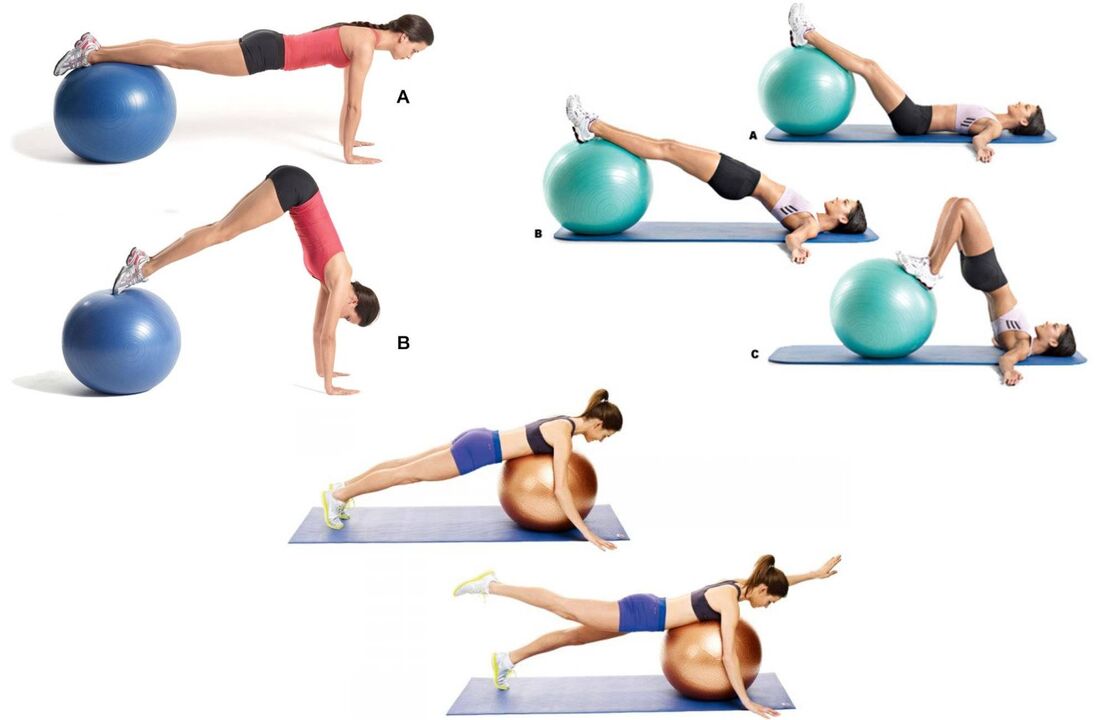
At the end of gymnastics, rub the back of your neck with your palms.
To get rid of the physical suffering caused by cervical osteochondrosis, you can take a poplar stick or a rolling pin and slowly tap the shoulder, scapula, and spine on one side and then the other. You can give a small massage to relieve tension and pain.
To quickly get rid of lower back pain, you need to lie down on a hard surface, preferably on the floor, bending your legs at the knees. Curve your feet in one direction and the other, trying to reach the floor with your knees.
With exacerbation - how to relieve pain
Often, with the exacerbation of the disease, the person does not know where to go. Continuous medication is not possible, but there are ways to get rid of acute pain without resorting to medication.
First, heat must be placed on the problem area. You can wrap a woolen scarf in this place. Exposure to cold is also possible, but only on the first day after the onset of the problem and under the supervision of a doctor.
Lie down on a hard surface and try to fix the sore spot. In case of pain, it is advisable to place a soft roller under the lower back to relieve tension in that area. Better to bend your legs. The chest section can be wrapped with a tight bandage, and a cardboard and cotton splint can be applied around the neck, as in a wound.
If relief does not come, a doctor should be called. And to relieve severe pain, take an anesthetic.
Prevention - how to prevent osteochondrosis
Before starting prevention, you should clarify the most common causes of osteochondrosis. The risk of this disease is increased by inadequate diet, sedentary lifestyle, overweight, bad habits (smoking, alcohol dependence), high physical activity and postural disorders.
Obviously, to prevent the development of the disease, one must first establish a diet and introduce physical activity. Just do elementary morning exercises, stretching, light self-massage of the lower back and neck, swinging your arms and legs. In the workplace, you should take 2-3 minutes to warm up. All types of swimming in the pool work well.
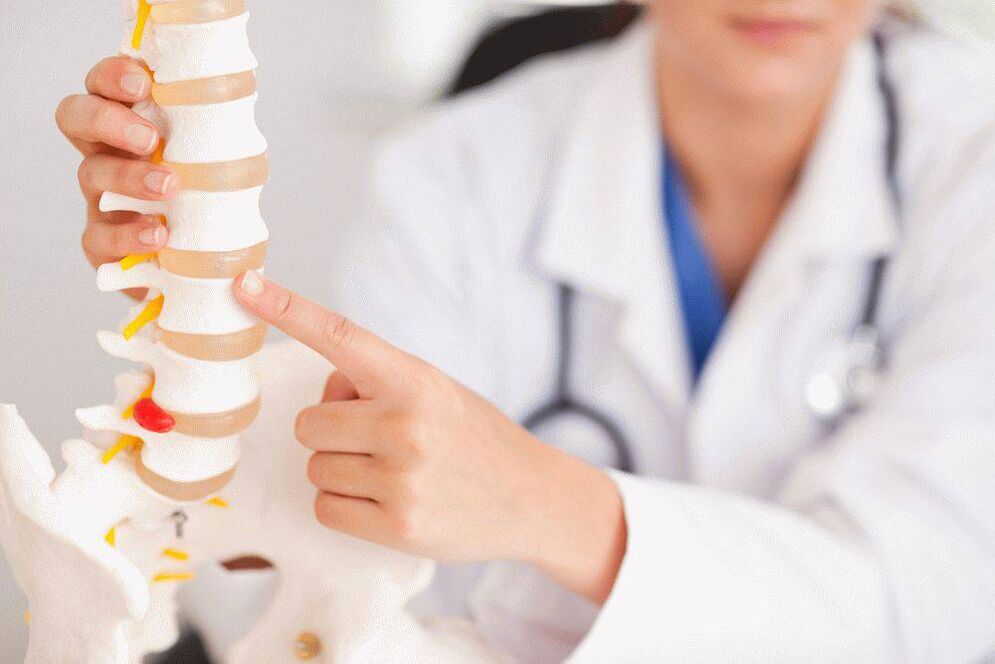
Fighting excess weight will help to eliminate the risk, hypothermia of the body should not be allowed, traumatic situations. Avoidance of stressful situations and breaking bad habits are worth dealing with. Attention must be paid to proper nutrition, the body must receive a sufficient amount of protein, but salty foods, flours and fatty foods must be limited.
In some cases, with a lack of vitamins, the doctor may prescribe additional vitamin and mineral complexes. All of this in combination will help protect your spine from problems.




























